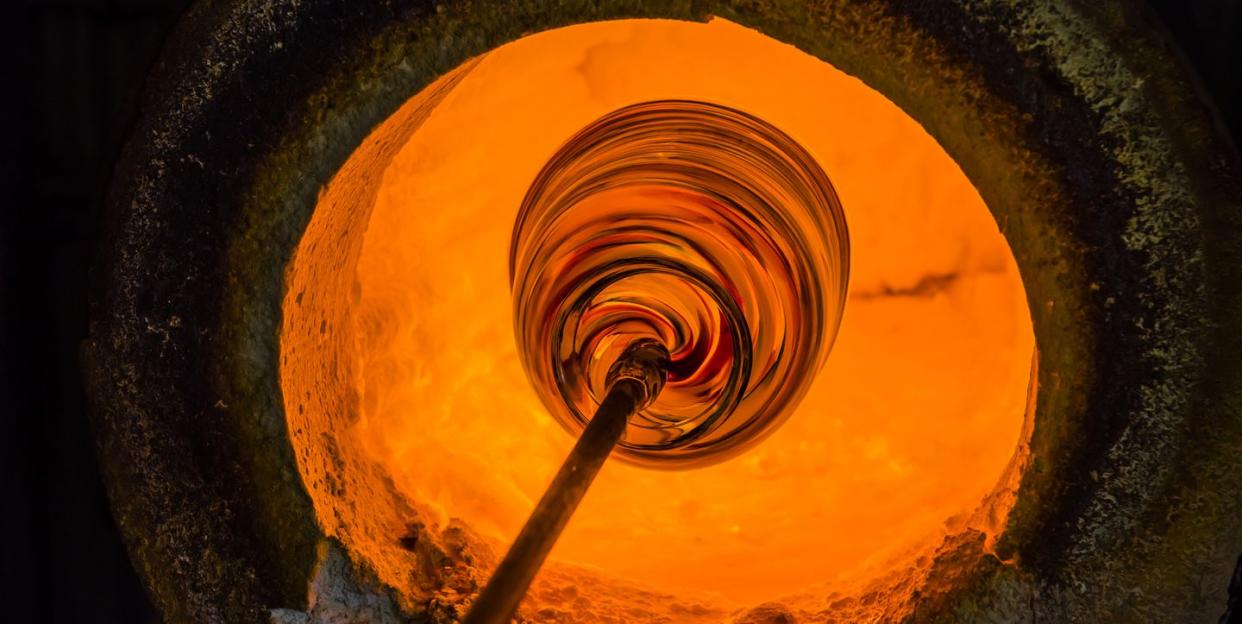Glass Is Sorta Liquid, Sorta Solid, and Fully Weird, Research Suggests

New research from a Google think-tank suggests glass is more enmeshed than we realized.
Glass has unusual chemical properties that last for thousands of years, which scientists modeled with a neural graph network.
They focused on how each glass molecule affects the concentric layers of surrounding molecules.
People who investigate scientific topics either love or hate glass, which is a confusing none-of-the-above unicorn: neither fully liquid nor fully solid, exhibiting some properties of each, but nothing conclusive. New science may finally help us understand why glass looks like a liquid deep down, but is structurally sound enough to be part of our homes and other structures.
🔬Everything is science. Let's tinker together.
Scientists at DeepMind, an AI think-tank operated by Google, have used a neural network to analyze how glass behaves. In the “Google glass” paper (too soon?), they explain why one key reaction is the big mysterious keystone in our understanding of glass:
“Glass is made by starting with a glowing mixture of high-temperature melted sand and minerals. Once cooled, its viscosity increases a trillion-fold, and it becomes a solid. Yet the molecules in the glass remain in a seemingly disordered state, much like the original molten liquid—almost as though the disordered liquid state had been flash-frozen in place. The glass transition, then, first appears to be a dramatic arrest in the movement of the glass molecules.”
The reaction is special, but it’s not unique to glass. The researchers cite other activities, like ironing clothes, where heat and pressure change how clothing fibers behave in a similar way. And to model what’s going on inside a pane of glass, the DeepMind researchers turned to a neural network using graph theory. Indeed, they cite a special application of a neural net designed as a graph from the get-go.
"Our network architecture was a typical graph network architecture, consisting of several neural networks,” they explain in the paper. They tuned it with parameters about how each node would relate to the nodes around it and how the edges would behave.
“To study the full dynamical evolution of glasses, [...] each particle will have collided several thousands of times over those timescales. Thus, the network must find a way to coarsely represent the long-term dynamics of the system.”
And in glass, that long term is indeed very long. The same way modeling is helping scientists understand nanosecond-fast atomic and nuclear reactions, it helps other scientists study how glass behaves over thousands of years as it “relaxes.”
“In numbers, the correlation between our prediction and the simulation's ground truth is 96 [percent] for very short timescales, and remains high at 64 [percent] for the relaxation time of the glass (an improvement of 40 [percent] compared to the previous state of the art),” the researchers write.
📩 Make your inbox more awesome.
With a much more efficient molecular modeling graph network in hand, the researchers could turn to what’s actually going on in the glass. They considered molecules in the glass structure to be organized into shells, in the atomic sense, where a layer of molecules surrounded the central molecule, and a second shell surrounded that layer, and so forth.
The model confirmed something that seems intuitive, but still must be illustrated and backed up using scientific ideas: In the liquid phase, glass molecules didn’t influence their surroundings very far past their innermost shell. But in the cooler phases where the glass is solid, the molecules held tightly to their shells all the way to the fifth shell and behind.
“These findings are consistent with a physical picture where a correlation length (a measure of the distance over which particles influence each other) grows upon approaching the glass transition,” the scientists explain.
If the science has you a bit glassy-eyed, don’t worry: The tl;dr is that this research made an effective new neural network model for glass, and the researchers want to encourage other groups to try similar approaches when studying their own materials up close. To do that, they’re making their findings more ... transparent.
You Might Also Like


